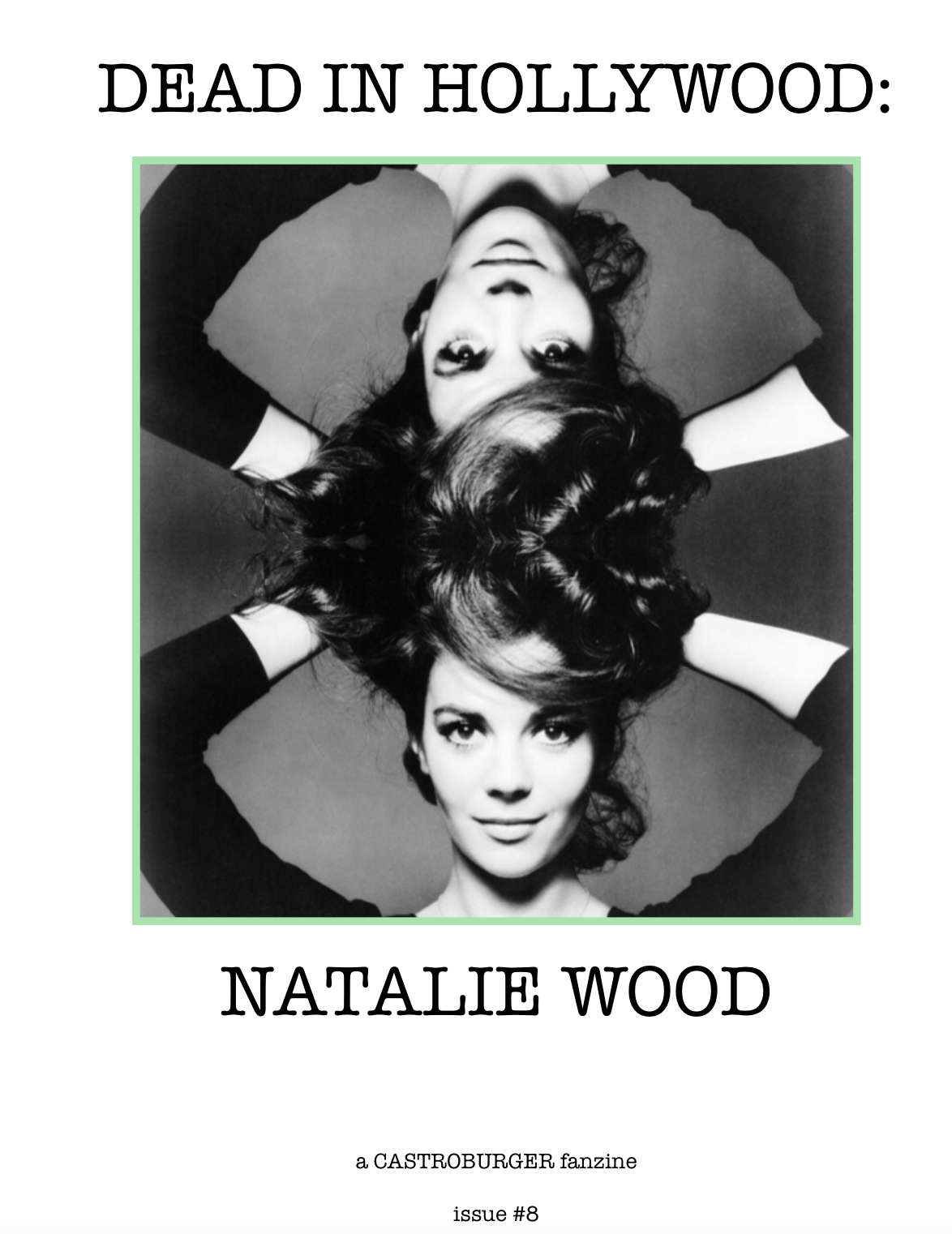Dead in Hollywood: River Phoenix (Issue 4)
Grab a copy of the zine Dead in Hollywood: River Phoenix (issue 4).
Grab a copy of the zine Dead in Hollywood: River Phoenix (issue 4).

𝟸𝟻 𝚢𝚎𝚊𝚛𝚜 𝚊𝚐𝚘 𝚝𝚘𝚗𝚒𝚐𝚑𝚝, 𝚁𝚒𝚟𝚎𝚛 𝙿𝚑𝚘𝚎𝚗𝚒𝚡 𝚒𝚜 𝚌𝚊𝚛𝚛𝚒𝚎𝚍 𝚘𝚞𝚝 𝚘𝚏 𝚝𝚑𝚎 𝚍𝚊𝚛𝚔𝚎𝚗𝚎𝚍 𝚛𝚎𝚌𝚎𝚜𝚜𝚎𝚜 𝚘𝚏 𝚝𝚑𝚎 𝚅𝚒𝚙𝚎𝚛 𝚁𝚘𝚘𝚖 𝚗𝚒𝚐𝚑𝚝𝚌𝚕𝚞𝚋 𝚒𝚗 𝚝𝚑𝚎 𝚎𝚊𝚛𝚕𝚢 𝚑𝚘𝚞𝚛𝚜 𝚘𝚏 𝙷𝚊𝚕𝚕𝚘𝚠𝚎𝚎𝚗. 𝙷𝚎 𝚍𝚒𝚎𝚜 𝚘𝚗 𝚝𝚑𝚎 𝚜𝚒𝚍𝚎𝚠𝚊𝚕𝚔 𝚠𝚑𝚎𝚛𝚎 𝚑𝚎 𝚌𝚘𝚕𝚕𝚊𝚙𝚜𝚎𝚜, 𝚊 𝚟𝚒𝚌𝚝𝚒𝚖 𝚘𝚏 𝚖𝚎𝚝𝚊𝚋𝚘𝚕𝚒𝚣𝚎𝚍 𝚑𝚎𝚛𝚘𝚒𝚗, 𝚌𝚘𝚌𝚊𝚒𝚗𝚎 𝚊𝚗𝚍 𝙷𝚘𝚕𝚕𝚢𝚠𝚘𝚘𝚍 𝚎𝚡𝚌𝚎𝚜𝚜. 𝙷𝚎 𝚒𝚜 𝟸𝟹. (𝚆𝚊𝚜𝚑𝚒𝚗𝚐𝚝𝚘𝚗 𝙿𝚘𝚜𝚝)
Pick up a copy of the zine Dead in Hollywood: River Phoenix (Issue 4)!


River Phoenix. The Only Boy in the World.
“I would never, never do anything unless I believed in it.” _River Phoenix

“I don't want to die in a car accident. When I die it’ll be a glorious day. It’ll probably be a waterfall.” -River Phoenix
Halloween marks the 25th anniversary of River Phoenix’s death. At the age of 23, he od’s on the sidewalk outside of the Viper Room on the Sunset Strip.
"He’s having seizures! Get over here please, please, 'cause he's dying, please." -Joaquin Phoenix’s 911 call

Die rich.

Dies on this day in 1952.

Hattie McDaniel is born to former slaves in 1893. She becomes the first African American to win the Academy Award for her performance in the 1939 film, "Gone with the Wind.” When McDaniel takes the stage at the 12th Academy Awards in 1940, she is the only black woman in the room. The ceremony that year is held at the segregated Ambassador Hotel where Robert Kennedy is assassinated decades later. She appears in 300 films but is only credited in about 80 of them. As historic as McDaniel's win is… it will take nearly a quarter century before Oscar crowns another black actor - Sidney Poitier wins in 1963’s “Lilies of the Field.” McDaniel dies of breast cancer at age 57 on October 26, 1952. In her will, McDaniel writes: "I desire a white casket and a white shroud; white gardenias in my hair and in my hands, together with a white gardenia blanket and a pillow of red roses. I also wish to be buried in the Hollywood Cemetery.” Hollywood Cemetery, now named Hollywood Forever Cemetery, is the resting place of movie stars like Douglas Fairbanks and Rudolph Valentino. Its owner at the time, Jules Roth, refuses to allow McDaniel to be buried there, because, at the time of her death, the cemetery is segregation and will not accept the remains of black people for burial. Her second choice is Rosedale Cemetery (now known as Angelus-Rosedale Cemetery), where she lies today.

“You can't choose between life and death when we're dealing with what is in between.”

Putting the finishing touches on Dead in Hollywood: Natalie Wood (Issue 8). I fall in love with her more every day.

One moment I’m sailing on a yacht off the coast of Catalina Island with Natalie Wood and the next, I’m showering with Hollywood’s first gay teenager, Sal Mineo. I have some really exciting Dead in Hollywood zines coming your way.

Today would have been Bela Lugosi’s 136th birthday. Lugosi is famous for portraying Count Dracula in the 1931 film. He is buried at Holy Cross Cemetery in Culver City, CA near the gravesite of Sharon Tate.

Staying up late and working on the upcoming issue of Dead in Hollywood: Natalie Wood (Issue 8). Tonight’s soundtrack is brought to you by The Ventures. One step beyond the twilight zone… that’s all there is.
“Rebel Without a Cause” defined both popular and youth culture upon its release in 1955, giving voice to the American teenager of the 1950’s. Even though Wood has starred in 20 films before turning 16, she is desperate to transition to adult roles. She sees the part of Judy as her ticket into adulthood. Complicating matters is that every actress from Debbie Reynolds to Jayne Mansfield is being considered for the role. Wood's mother pushes her into "dating" the 44-year-old "Rebel" director, Nicholas Ray - her mother waits in the car during Wood and Ray's romps at the Chateau Marmont. Sleeping with the director doesn't even work! It's not until a drunken car crash on Laurel Canyon with Dennis Hopper that Ray to cast considers Wood for the role. Ray visits Wood at the hospital, where the doctor calls Wood a "goddamn juvenile delinquent." Wood yells: "Did you hear what he called me, Nick? He called me a goddamn juvenile delinquent! Now do I get the part?" Wood deserves the credit for transforming Ray’s vision of Wood’s character Judy from a trashy teen to a confused, hurt kid like Wood herself.


James Dean and Natalie Wood.

“Ha! An Aardvark in the…”
Gene Krupa is a famous jazz drummer, bandleader, actor, and composer. Krupa is known for his energetic style and showmanship. His drum solo on "Sing, Sing, Sing" elevated the role of the drummer as a frequently used solo voice in the band. He is also known for defining the standard drum kit used today. Sal Mineo stars as Krupa in the 1959 biopic "The Gene Krupa Story." Krupa himself plays the drums on the soundtrack for the film, and for the sequences in which Mineo, as Gene, plays the drums. In 1943, Krupa is arrested for possession of two marijuana cigarettes. He is charged with contributing to the delinquency of a minor and is given a 90-day jail. He serves 84 days of the sentence. In the early 1970s, Krupa's house in Yonkers, New York, is damaged by fire, but he continues to live in the parts of the house that were habitable. On October 16, 1973, Krupa dies in Yonkers at the age 64 from heart failure, though he also had leukemia and emphysema. In 1978, Krupa becomes the first drummer inducted into the Modern Drummer Hall of Fame. Sal Mineo dies in 1976 when he is stabbed to death in the alley behind his apartment building near the Sunset Strip in West Hollywood, CA. Mineo is stabbed just once, but the knife blade strikes his heart, leading to immediate and fatal internal bleeding. Before the New Beverly closed for remodeling, my husband and I got a chance to watch "The Gene Krupa Story" on the big screen. It was less than a week after I had finished my first zine: Dead in Hollywood: Sal Mineo (Issue 1). The manager was nice enough to let me leave a stack of my zines in the lobby next to postcards of Sal.
Hard at work on Dead in Hollywood: Natalie Wood (Issue 8). It’s going to be my most personal issue yet. More to come. Stay tuned. (Instagram: @deadinhollywoodzine)

“If a man can bridge the gap between life and death, if he can live on after he's dead, then maybe he was a great man.” -James Dean

Dean Scream.